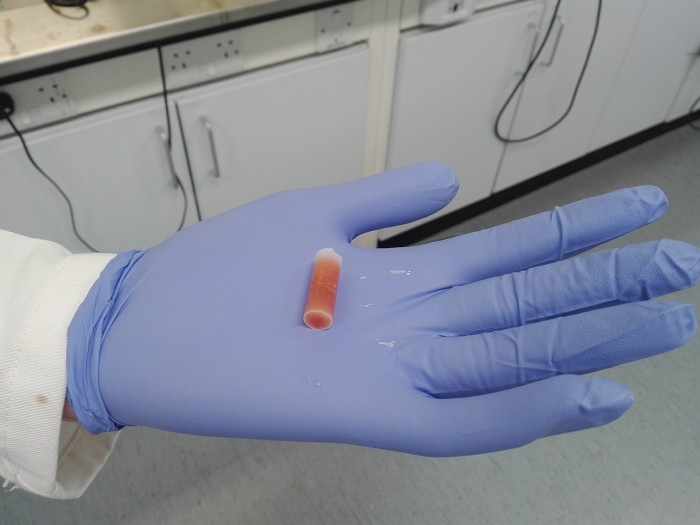Advertisement
Grab your lab coat. Let's get started
Welcome!
Welcome!
Create an account below to get 6 C&EN articles per month, receive newsletters and more - all free.
It seems this is your first time logging in online. Please enter the following information to continue.
As an ACS member you automatically get access to this site. All we need is few more details to create your reading experience.
Not you? Sign in with a different account.
Not you? Sign in with a different account.
ERROR 1
ERROR 1
ERROR 2
ERROR 2
ERROR 2
ERROR 2
ERROR 2
Password and Confirm password must match.
If you have an ACS member number, please enter it here so we can link this account to your membership. (optional)
ERROR 2
ACS values your privacy. By submitting your information, you are gaining access to C&EN and subscribing to our weekly newsletter. We use the information you provide to make your reading experience better, and we will never sell your data to third party members.
Reagents
A multitalented atom-transfer reagent
Combination ylide and diazo compound facilitates multiple organic transformations depending on the starting material
by Brianna Barbu
July 18, 2024
In chemistry, as in other art forms, a well-executed mash-up can be greater than the sum of its parts.
Researchers at the Technical University of Dortmund, led by Max Hansmann, combined the characteristic parts of two well-known reagents—a phosphorous ylide and a diazo compound—into a versatile new compound for transplanting carbon atoms into organic molecules (Science 2024, DOI: 10.1126/science.ado4564). “We very quickly saw that we can use it for different purposes depending on the starting material,” says Hansmann.

The molecule’s simple structure consists of a carbon atom flanked by a triphenylphosphine (PPh3) on one side and dinitrogen on the other. Hansmann says the team’s initial motivation was simply to make the compound and explore its properties.
The researchers found that the diazophosphorous ylide was fairly straightforward to make by treating an already well-known carbodiphosphorane ylide compound (Ph3P=C=PPh3) with nitrous oxide (N2O) to install the nitrogen piece.
The reagent can transfer different pieces of itself into other molecules to accomplish several types of reactions. With carbenes and other ligand-type structures, the CPPh3portion undergoes ligand exchange to form novel ylide structures. The CN2fragment can be used to create pyrazole rings by cycloaddition to alkenes. But what this reagent does especially well is appending its single carbon atom to carbonyl compounds to turn them into either cumulenes with three sequential double bonds or into alkynes—including strained internal alkynes that can be used in click reactions.
Organic chemist Guangbin Dong of the University of Chicago, who was not involved in the paper, called it “a remarkable work” in an email. In particular, he says, the ketone-to-cumulene transformation is “a really cool reaction” that may work better than other methods of making those compounds.
Hansmann says this work fits into the synthetic community’s growing interest in molecular editing—or methods for adding and deleting atoms from molecules’ carbon skeletons. “Carbon, obviously, is one of the most attractive atoms you want to transfer.”.



Join the conversation
Contact the reporter
Submit a Letter to the Editor for publication
Engage with us on Twitter